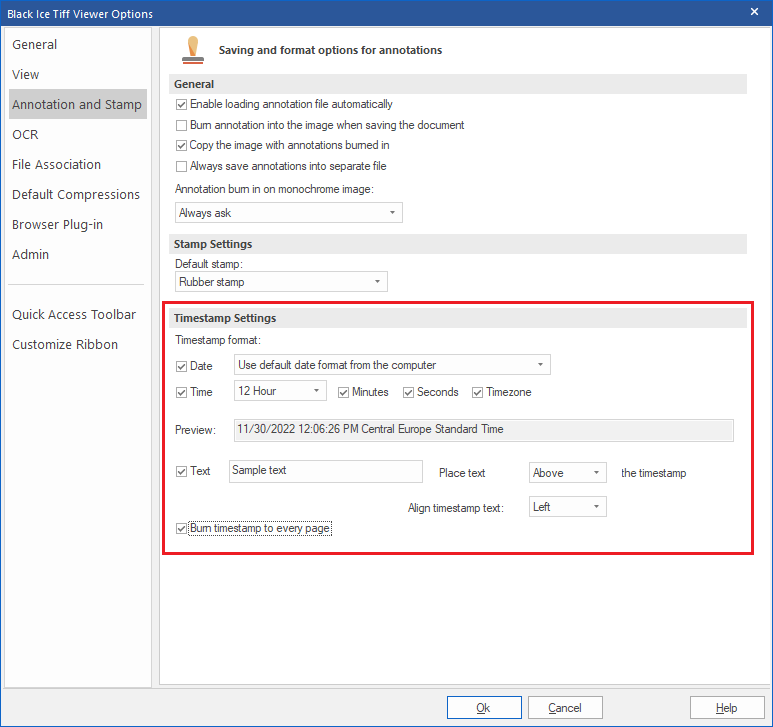
In Timestamp Settings, users can configure the timestamp’s format as well as add additional text to the timestamp.

Date: In this section, users have 7 options (example when the date is 30th September 2017):
· Use default date format from the computer (default)
· MM/DD/YYYY (09/30/2017)
· M/D/YY (9/30/17)
· YYYY/MM/DD (2017/09/30)
· DD/MM/YYYY (30/09/2017)
· DD-MON-YYYY (30-SEP-2017)
· Julian Date (2458026)
Time: In this section, users can choose whether they want to use a 12 or 24 hour time formatting. One can also choose if they want to add the minutes and seconds on the timestamp, or even the used computer’s time zone. Users can also opt out of this function by unchecking the checkbox. (By default the 12 hour time format with minutes and seconds is selected)
Text: In this section, one can add additional text to the timestamp, and configure the place and align of the text. (unchecked by default)
Burn timestamp to every page: If checked, TIFF Viewer burns the timestamp annotations to every page of the document. If unchecked, TIFF Viewer burns the timestamp annotations to the page where they were placed.
NOTE: If the text is placed next to the timestamp (Left or Right option), the Align timestamp text function is not available.